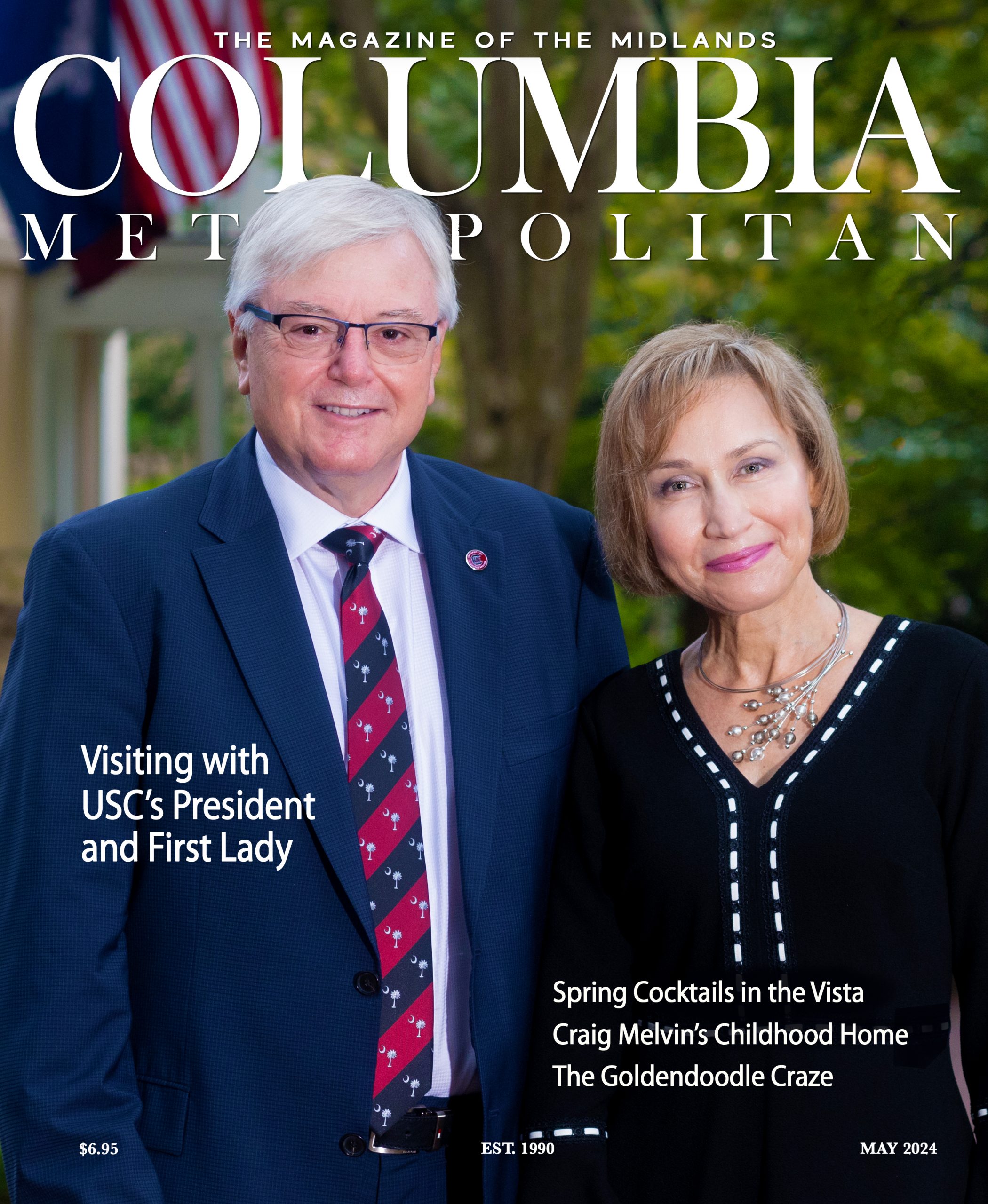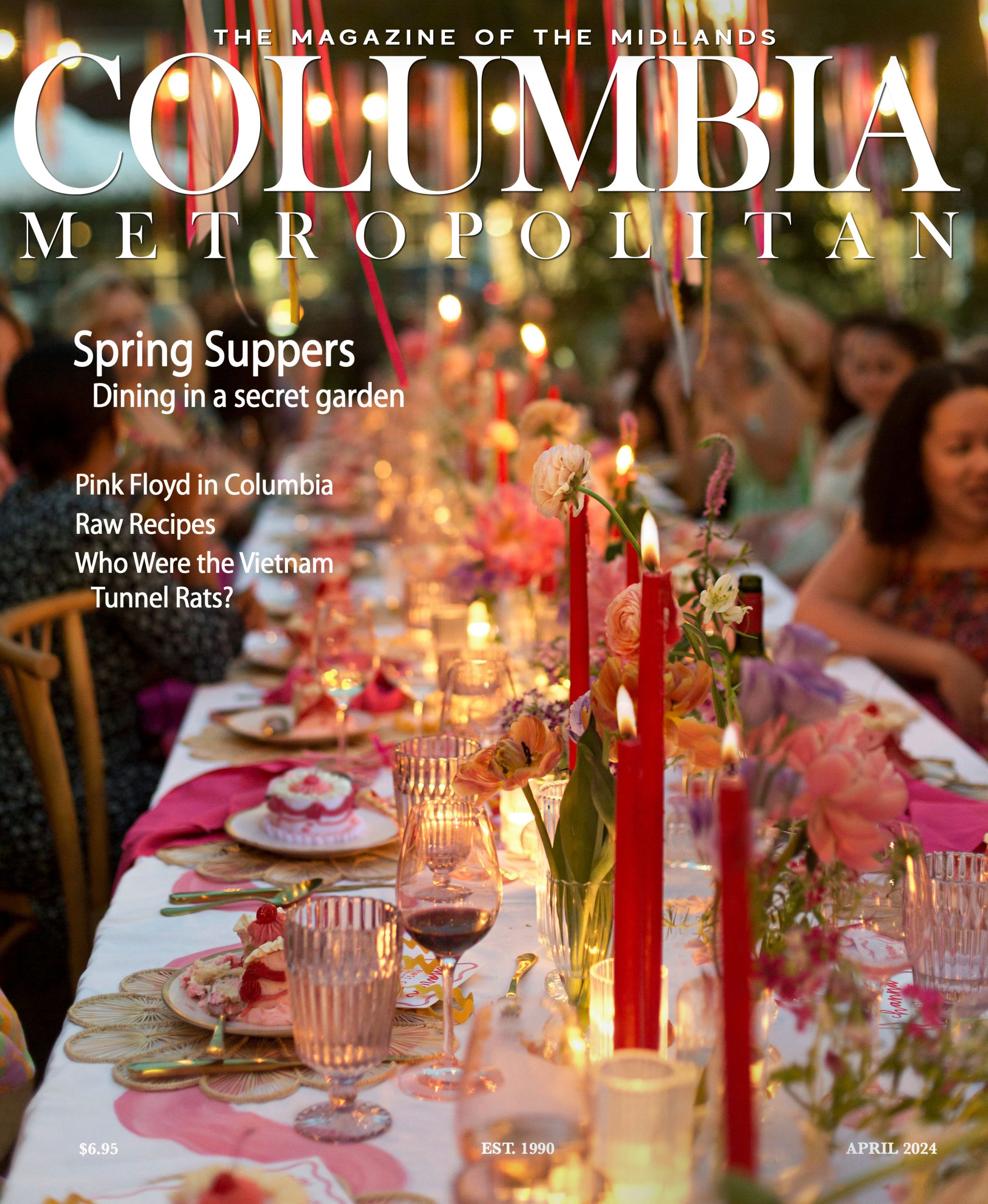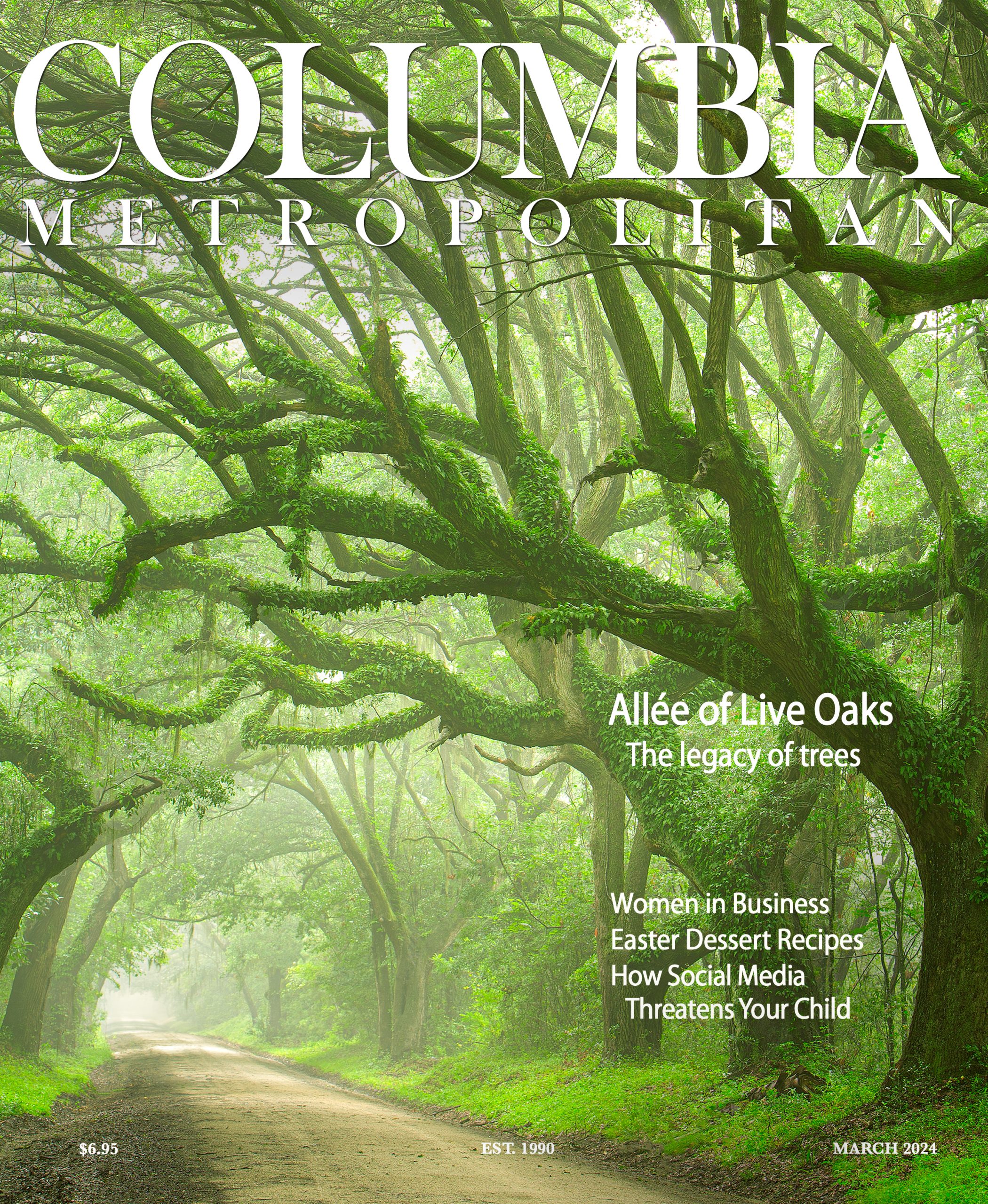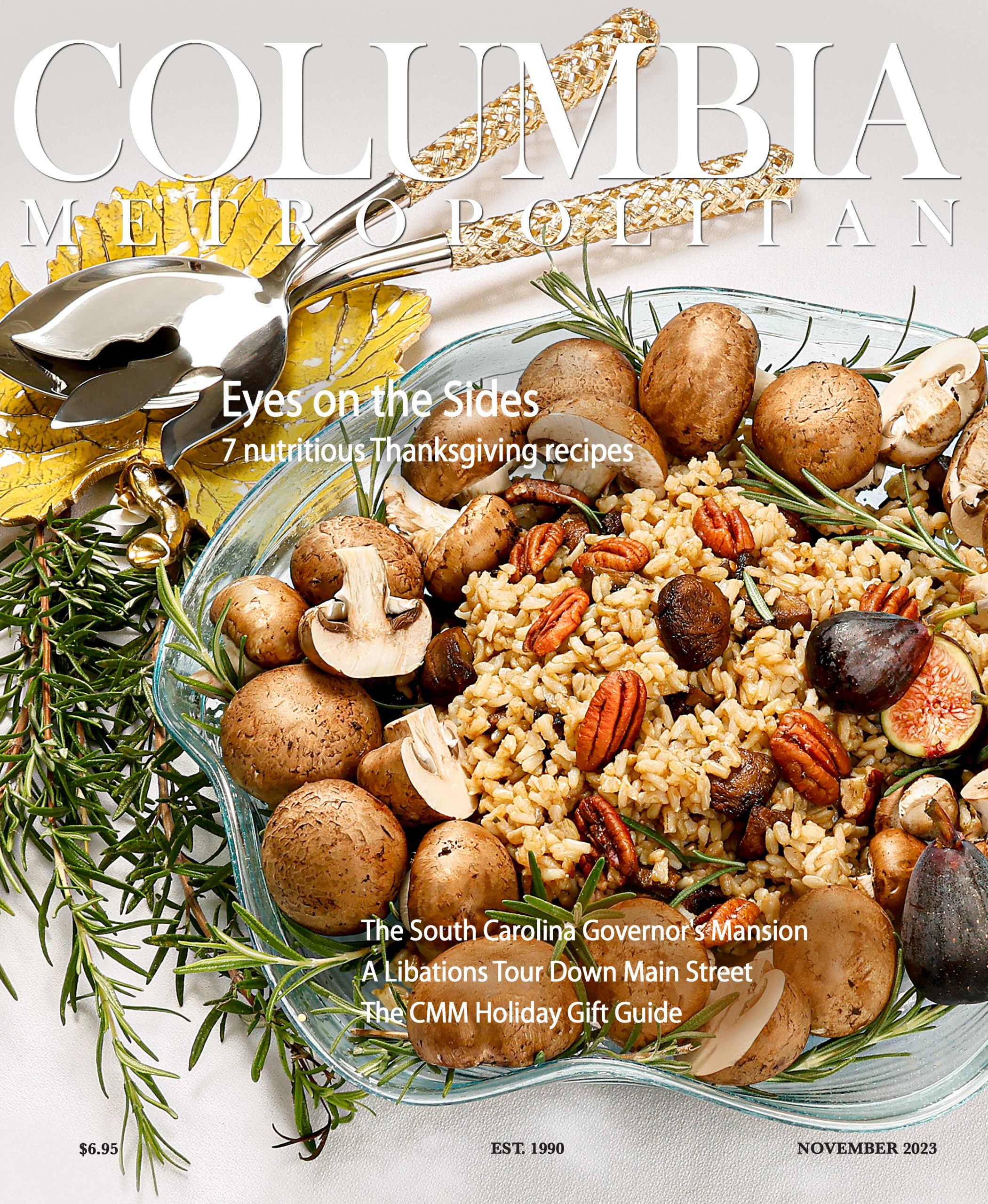
Youth Corps was established by a group of Columbia high school leaders as a springboard for higher education and the professional world; unique experiences place students in unfamiliar contexts to challenge their thinking and develop their soft skills. Sarah Campbell Brown from A.C. Flora High School, Ranti Olatosi from Hammond School, Kalei Colter from Richland Northeast High School.
As high school students step out of their car and into Leadership Weekend at Camp Bob Cooper on a humid August morning, the “comfort zone” they had always known ceases to exist. Once suited up with a name tag and the green YC drawstring bag participants will carry for the next nine months, each is enthusiastically welcomed into the circle of students engaging in get-to-know-you games, smiling and laughing as they enter a new environment and discover commonalities they share. There’s a palpable energy and excitement in the air, a hallmark of all sessions to come.
This retreat marks the beginning of a new Youth Corps program year. Youth Corps was founded by a group of Columbia leaders to establish a program for high school students focusing on experiential learning and leadership development. Youth Corps, now in the midst of its 19th program year serving ninth and 10th graders, has more than 600 alumni, many of whom continue to be involved in the organization.
Each year, 36 students are selected from applicants throughout the Midlands to undergo a nine-month program composed of nine different modules: Leadership Weekend; arts and culture; philanthropy and nonprofits; crimes, victims, and justice; media and journalism; legislation and government; business and economics; investment and finance; and career and higher education. Students learn from community leaders to collaborate and connect with one another. Nineteen different public and private Midlands schools are represented in the program.
While many students have had the opportunity to grow and develop their leadership skills on the softball field, performing in a school play, or playing in the marching band, these school settings are very familiar and routine for students who likely have been pursuing these endeavors for years. Youth Corps is a unique experience in that it repeatedly places students in unfamiliar contexts, challenges their thinking, and develops their soft skills. The exposure these high schoolers have through Youth Corps acts as a springboard for their endeavors in higher education and the professional world.
The locations for sessions are spread out across the greater Columbia area. From poetry night at Saluda Shoals Park to soft skills development at Richland Library Main to visits to the Richland County Sheriff’s Office to learn about the criminal justice system, students can see parts of Columbia to which they may never have been exposed in the past.
One of the highlights for many students is the philanthropy and nonprofits module, which encompasses volunteer activities like running a fall festival at a local homeless shelter. As a Youth Corps Year 17 participant, I was assigned to the entrance of the bouncy house obstacle course to ensure that the children stayed in line and removed their shoes before entering. As we cleaned up, many of the children gave us sweaty hugs, a sweet gesture that reminded me of the impact I could make by donating my time to serve others.
Seabrook Easterling, a fellow Youth Corps Year 17 participant and a current senior at Ben Lippen, worked the check-in table, giving each child a warm welcome and orienting them to the festival layout. “It was incredible to share in the joy the children had as they experienced the fun of trick-or-treating and bounce castles!”
Spending a Saturday repairing a roof with Home Works was a highlight for many students. Climbing onto the roof and learning how to operate hand tools was a new experience for most, and the undertaking allowed them to feel a sense of accomplishment and pride at being able to serve someone in need. Ranti Olatosi, a Youth Corps Year 17 member who is currently a senior at Hammond, says, “I loved being able to communicate with the group and bond with them while helping out someone in need while learning a new skill.”
The business module poses the greatest challenge for teamwork and collaboration. In just two months, students must plan their business, sell their products, distribute the goods to customers, and manage revenue. Although this may seem daunting, Youth Corps provides a structured framework while giving lots of autonomy and responsibility to the students as they learn the skills of delegation and organization.
As the CEO of my group’s coffee company, I loved being able to organize group meetings and learn how to effectively pull each member into action. Whether it was deciding on our company name, creating mission and vision statements, or designing the logos for the coffee bags, learning about the intentions behind each step of the business process was very interesting. Beach Loveland, roast master and owner of Loveland Coffee, a local cafe in Irmo, provided the beans and support for the project.
The first meetings were held at the café, where groups learned about how the beans are sourced from Guatemala, which I incorporated into my logo design with native foliage and animals. After several meetings with the Youth Corps staff and other CEOs collectively to review designs, my logo was chosen to be the one featured on the coffee bags! Seeing my drawings made into labels was such a gratifying feeling, which further sparked my interest in graphic design and marketing.
In addition, students learned what is involved in promoting and selling their products. As a part of the media and journalism module, participants visited Genesis Studios in Cayce to create their own commercial. The process involved writing a script, bringing props from home, and acting in front of a camera. Learning sales strategies and having to contact strangers was also a leap out of students’ comfort zones. “I made more than 50 cold calls to friends, acquaintances, and neighbors. Not only did I practice key professional phone skills, I was also awarded a Reese’s Bar for being the second most successful saleswoman!” says Seabrook.
Kalei Colter, our group’s assistant CEO and a junior at Richland Northeast, comments that cold calling was her favorite part of the business module, describing how she was able to “show a sense of bravery” in selling while enjoying doing her part to help the team.
After a few weeks of logging sales, the module concludes with factory night: four grueling hours during which a team’s collaboration and organization skills are put to the test. Since my team sold 357 bags, we had to work efficiently to package the bags and organize them for distribution. The stakes were high as messed-up bags would add to our overhead costs and mixed-up orders would result in a customer receiving the wrong item.
A complete group effort with all hands-on deck was necessary to place accurately the label we designed on the bags, measure out the proper weight of the beans on a scale, seal them, and then package each order. Our group managed to finish on time with only one messed-up item. Upon reflecting on the experience, Ranti says, “It was nice to see all of our work and how it culminated into that one moment.”
Previous lessons in philanthropy come full circle when students are able to give back at the conclusion of the business module. While the profits are distributed among group members, teams are encouraged to donate the remaining 10 percent of profits to a local charity. My team decided to deliver a $600 check to Camp Cole, which we found very rewarding.
Students receive a true capital city experience during the legislation and government module when they have the opportunity to visit the South Carolina State House during session to meet with legislators about current bills and then attend a lunch with elected leaders. Our year, we researched a proposed bill on texting and driving and prepared points to discuss with our individual representatives and senators.
Kalei says, “One thing in Youth Corps that truly pushed me out of my comfort zone would have to be going to the State House. When we went there, we had to talk to all of these policymakers and legislators, and that’s something that I don’t normally do — going up to people randomly and talking about my views. So that really pushed me out of the box to communicate and know that my voice is as important as other people’s.”
Youth Corps has a profound impact on the students involved. One of Youth Corps’ taglines is, “the fun is in the action.” Seabrook reflects on a Youth Corps memory that she feels embodied this mantra. “There were instances, like during poetry night, where I was initially embarrassed to stand up in front of my peers and stumble through my lengthy limerick. But then, as the audience cheered me on, graciously listened to me, and exhibited patience and empathy, it became more fun to be on stage!”
Ranti shares a similar view. “When I started Youth Corps I was very quiet and to myself … it was very hard to get me to be loud, and Youth Corps definitely helped me get out of that.”
Notably, Youth Corps is only open to ninth and 10th graders, which is intentional. By providing students with leadership training during the formative high school years, students have time to apply those skills in their schools and their hometown before they graduate.
My Youth Corps experience enabled me to feel more confident and ready to take initiative. Since Youth Corps, I have joined and become chair of the Youth on Course Leadership Council, a national nonprofit. The delegation skills I acquired are critical here as I aim to lead by empowering others rather than doing the workload independently. The importance of community service the program has instilled in me prompted me to volunteer to teach process-based art at local afterschool centers. I also co-founded a book club at my school.
Ranti and Kalei have applied these leadership skills to their communities as well. For Kalei, the concept of trusting others learned through the business module was quite impactful. “I use that now on the soccer team. I really have to trust the players behind me and with me because otherwise we’re not going to win and meet that end goal.”
Ranti says, “I’d say the biggest thing I learned through working with a team is communication. Different people respond to different modes of communication, and one type might not work for someone. One person might not respond well to you yelling at them and shouting, ‘Yeah, come on, you got this!’ Some people might need you to be more quiet or more sincere. Learning that through Youth Corps and being able to apply that to my math team, cross-country, and even Leadership Weekend for other YC students was very important.”
Finding comfort within the uncom-fortable is a critical life skill that Youth Corps participants learn. Almost two years after graduating from Youth Corps, we students from Year 17 have reaped the benefits of this skill. “Youth Corps pushed me out of my comfort zone, helping me to overcome my fear of public speaking by providing opportunities to practice in a room full of people cheering me on. My confidence soared!” says Seabrook.
The Youth Corps experience equips students with the skills and resources to face future challenges. Ranti says, “If you’re ever in a situation when you’re uncomfortable, you can think, ‘I remember when I was selling coffee or in the State House doing something I wasn’t really comfortable with but was able to do it,’ or at Leadership Weekend when you were able to encourage someone to go on the high ropes even though they are scared of heights. Just being able to see that and witness that is a hope for me that I can get through those uncomfortable times, and I definitely appreciate Youth Corps for that.”
Editor’s note: Sarah Campbell Brown is currently a senior at A.C. Flora High School. When she emailed CMM with this article idea, she also expressed that she is an avid reader of the magazine and then requested to write the article. Being quite impressed with her gumption and her articulate email, I was delighted to give a high schooler a writing assignment. In our 34 years of publishing this magazine, this is a first!










